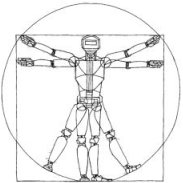Robotics: Science and Systems XIX
Reachability-based Trajectory Design with Neural Implicit Safety Constraints
Jonathan B Michaux, Yong Seok Kwon, Qingyi Chen, Ram VasudevanAbstract:
Generating safe motion plans in real-time is a key requirement for deploying robot manipulators to assist humans in collaborative settings. In particular, robots must satisfy strict safety requirements to avoid damaging itself or harming nearby humans. This is particularly challenging if the robot must also operate in real-time to quickly adjust to changes in its environment. This paper addresses these challenges by proposing Reachability-based Signed Distance Functions (RDFs) as a neural implicit representation for robot safety. RDF, trained using supervised learning, accurately predicts the distance between the swept volume of a robot arm and an obstacle. RDF's inference and gradient computations are fast and scale linearly with the dimension of the system; these features enables its use within a novel real-time trajectory planning framework as a continuous-time collision-avoidance constraint. The planning method here is compared to state-of-the-art methods and is demonstrated to successfully solve challenging motion planning tasks for high-dimensional systems under a limited planning time horizon.
Bibtex:
@INPROCEEDINGS{Michaux-RSS-23,
AUTHOR = {Jonathan B Michaux AND Yong Seok Kwon AND Qingyi Chen AND Ram Vasudevan},
TITLE = {{Reachability-based Trajectory Design with Neural Implicit Safety Constraints}},
BOOKTITLE = {Proceedings of Robotics: Science and Systems},
YEAR = {2023},
ADDRESS = {Daegu, Republic of Korea},
MONTH = {July},
DOI = {10.15607/RSS.2023.XIX.062}
}
